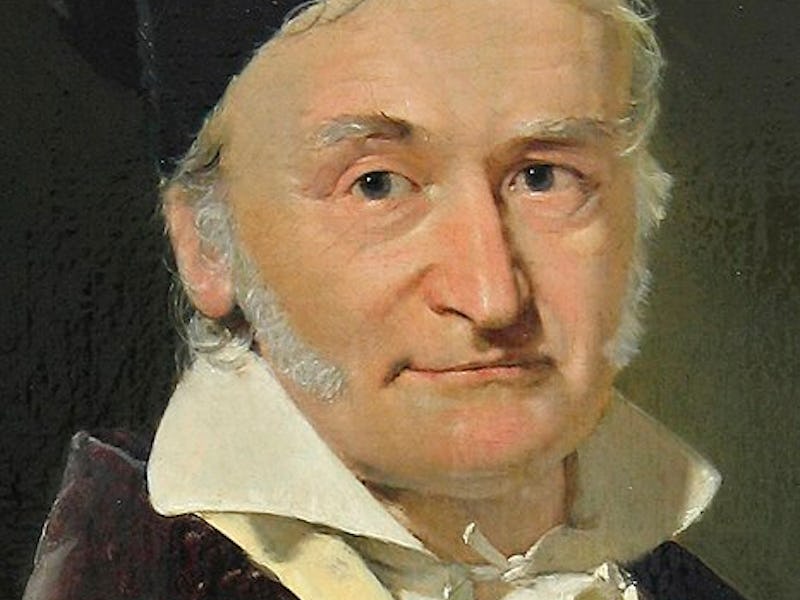Johann Carl Friedrich Gauß Changed History With His 17-Sided Shape
He famously called math "the queen of the sciences."

Monday’s Google Doodle honors Johann Karl Friedrich Gauß, a math super-genius who, assuming you’re not also a math super-genius, probably caused you some consternation in high school math. Born on this day in 1777, Gauß often honored with the grand title of “Prince of Mathematics” for his contributions, which include a bunch of fundamental math and physics theories. He also famously introduced a weird 17-sided shape to the world.
Gauß, who wowed his teachers by casually adding up all the integers from 1 to 100 in his head at the age of seven, made many discoveries about numbers that are still in use today. A greatly abbreviated selection of his accomplishments include his proof of the fundamental theorem of algebra, which he published in 1797; his 1809 two-volume treatise on the movement of celestial bodies in space; and then there’s the least-squares regression method, which everyone still uses to find an accurate relationship between two variables. A mathematician named Adrien-Marie Legendre started some beef with Gauß about the latter because he’d published a paper on it first, in 1805, but Gauß clapped back by saying he’d been using it since 1794. Then he used the method in an epic mic drop showing how planets move around the sun. Statistics buffs still refer to the Gauß-Legendre beef as the least squares “priority dispute.”
Gauss's "heptadecagon', a 17-sided polygon that showed the relationship between geometry and algebra.
But what’s widely considered his first important discovery is his construction of a 17-sided polygon called a heptadecagon, using only a ruler and a compass. This was big because it outlined a link between algebra and geometry that mathematicians had been trying to find since the time of the ancient Greeks, representing the first advance in polygon construction in over 2000 years. This work, published when Gauß was the ripe old age of 19, was a springboard for a lifetime of mathematical accomplishments.
Despite his achievements, there was one thing he didn’t quite get to: publicizing his rather rebellious ideas about Euclidean geometry. Since Euclid established the fundamental Elements of Geometry in 300 BCE, no one had thought of any alternative ways to geometrically describe space, but Gauß had pondered whether a non-Euclidean geometry might exist. He never did get his ideas together in a paper, however, and around 1830 the mathematicians János Bolyai and Nikolay Lobachevsky beat him to it.
Still, his other contributions to the science world loom large. Branching outside of pure math, he also figured out a lot about electricity, magnetism, geodesy, and the physics of fluids. But to Gauß, math was bae: He famously referred to math as “the queen of the sciences” and arithmetic as “the queen of mathematics.”
He had his own real-life human queen, his wife Johanna Osthoff, who died four years after they got married in 1805, leaving behind two kids and plunging Gauß into a deep depression. He eventually married Johanna’s best friend Minna Waldeck, who cared for him until he died in 1855. He lives on, not just in university math departments but also, weirdly, physically: his preserved brain continues to be used in studies of the physiology of genius.